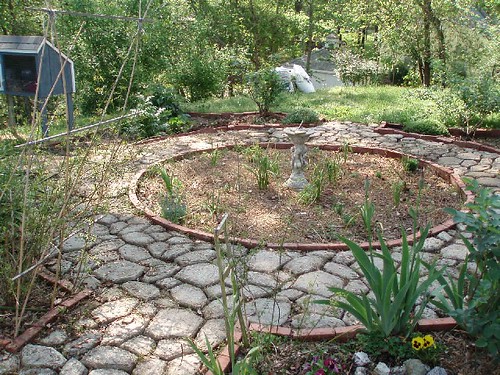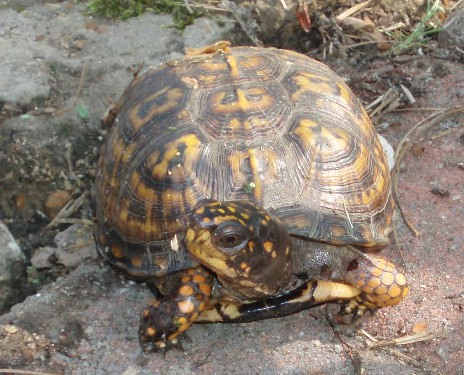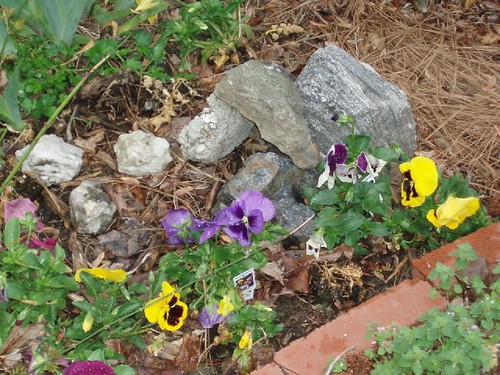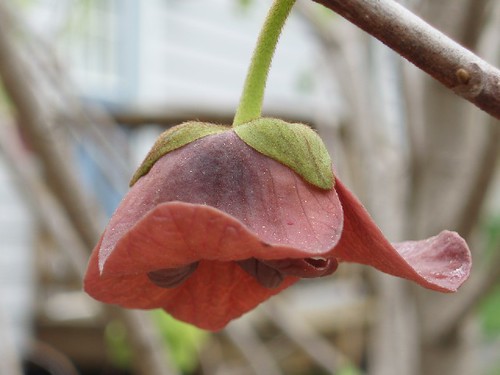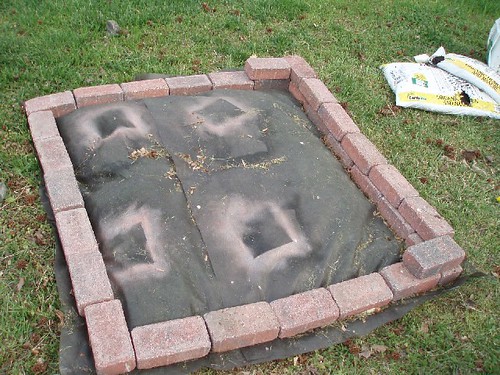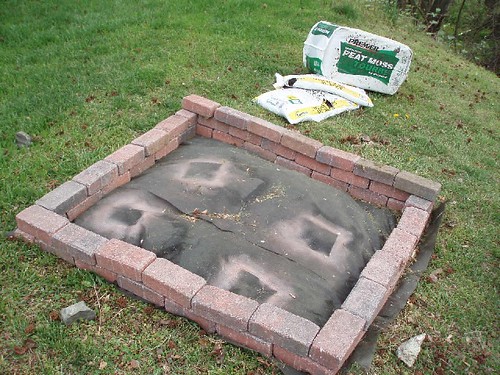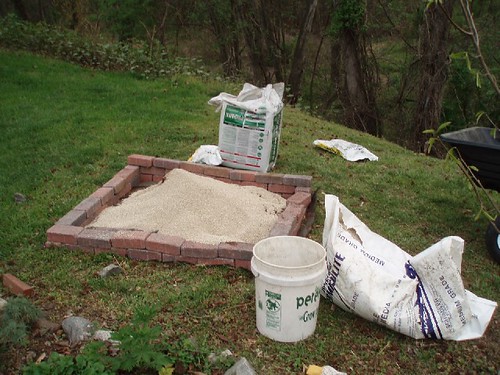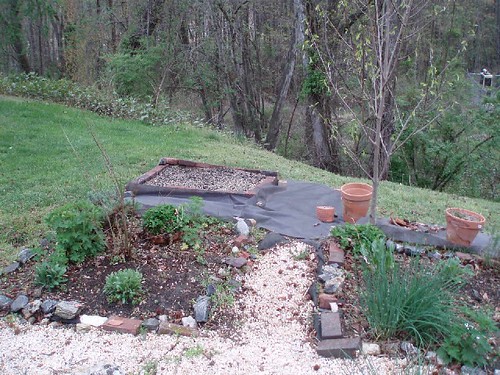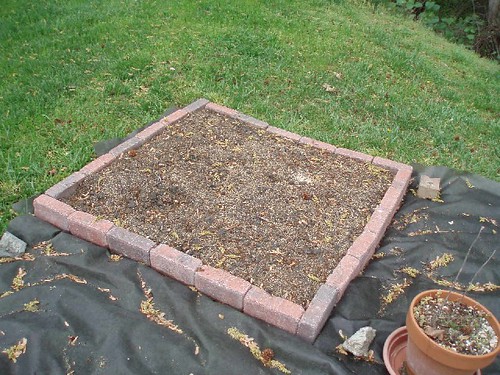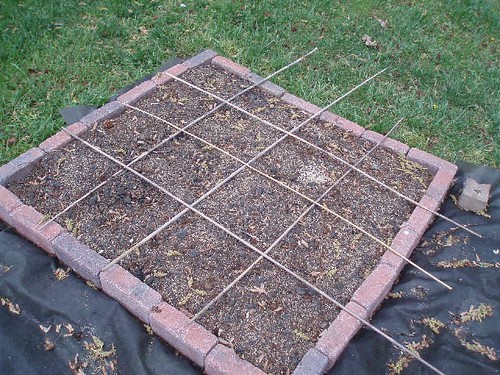Potager... pronounced pot-AH-zhay (the 'soft' g sound :)) is a French term, derived from the French word for soup. It basically means a kitchen or vegetable garden, often with flowers interplanted with vegetables. Most potagers are very ornamental… the herbs, vegetables and flowers that grow there are often laid out in formal shapes, and designed to look aesthetically pleasing as well as being useful.
Most potagers have a formal edging around the garden, and paths that weave in and out of the garden beds. The edging can be plants or hardscaping... like bricks or rocks. The paths are usually covered... you might use gravel, crushed shell, mulch, bricks, concrete... anything goes so long as the path is clearly delineated from the garden.
The French potager is comparable to the English cottage or kitchen gardens. The cottage gardens were also usually vegetables and flowers intermingled… and many kitchen gardens were likewise, although most were full of edibles only. Most cottage gardens, however, were not formally laid out the way a potager is.
So, how do you build a potager?
There is no real 'right way' of doing it, you just observe some of the 'rules'.
- The garden can be any size... but it is clearly delineated with paths in it. I recommend that the paths be at least every four feet... it is very hard to reach further in, and you do not want to have to walk on your flower beds... it can cause problems later!
- Make sure to use a geometric shape. This is not a 'definite' thing... you can use any shape you like... typically the potagers of old were made up of squares, rectangles and circles. Use your imagination though!
- A Potager has both flowers and vegetables in it. It is worth remembering that many vegetables actually have flowers of their own. The nasturtium is quite edible, the scarlet runner bean is very attractive. Herbs such as Bee Balm (Monarda didyma) and Pineapple sage (Salvia elegans) have beautiful red blooms that attract hummingbirds. Comfrey and borage, yarrow and marigold are all examples of useful and medicinal herbs that can also provide a wealth of flowery elegance to a garden. Echinacea (Echinacea purpurea and Echinacea angustifolia) and Lavender (Lavandula spp.) also have beautiful flowers. It is worth remembering that you can also use attractive foliage to make a statement in the garden…
- Fill it to the brim. A potager garden is full to overflowing with plants... grow vines vertically to add interesting structures and room to your garden!
- Don't forget the structures. Most potagers show a little 'structure' in them... a sundial, gazebo, trellis, arbour or gazing ball provide something to look at and enhance a focal point. Fountains come in all shapes and sizes, birdbaths and statues, benches and topiaries... they give a vertical height to the garden, and draw the eye to some attractive point.
- Serve all the senses. You must not forget that we have five senses... it is all very well to serve sight and taste... but don't forget touch, scent and sound... use a variety of foliage to create a different ‘feel’ in areas of your garden... allow water to trickle and wind-chimes to ring to help with sound, and the scent is adequately fulfilled with a plethora of scented flowers and foliage... herbs and roses are really good at this! Place Lemon Balm (Melissa officinalis) or Mint (Mentha spp.) in spots where legs can brush past them… let lavender cascade over the sides of a bed so that when you brush against the foliage you can smell it’s scent…Everyone should draw pleasure from your garden!
- Have a place... or a few places... to sit. Try hiding benches in nooks and niches, set a chair out in a space... and allow yourself a patio with a table, so that you can harvest your fresh vegetables and serve them straight away!
- Consider height. We have mentioned that structures and trellises give height to a garden… but it should also be noted that trees can help your garden grow upwards too. Carefully consider the spot, making sure it gets the required amount of sun without blocking the rest of your garden. Fruit trees are the best bet... they do not grow too high, their blossoms are a wonder to behold and (if you can beat the squirrels off) you have a harvest from it too!
- Don't forget your growing conditions. Don't be foolish enough to plant a garden in a spot where you wont get enough light, or where it floods every time it rains. Conditions like those need special care and consideration. Sometimes, fate happens... my own neighbour has planted a tree right where it will shade my vegetable garden... and my garden was there first. So far, it has been more of an annoyance than a problem, but it has started to give my garden an extra hour of shade it can barely afford. It is time that we did something about the shade from our own trees... I am not a fan of chopping down trees willy-nilly... but we have several dead trees in our garden, plus one that keeps splintering and breaking off limbs. Two trees are under heavy attack from poison ivy, and have the added disadvantage of producing numerous, prickly balls to seed from. Two other trees are of a type that grows spindly and tall... always losing branches. We are considering moving some of these trees to help deal with the problem... leaving the oldest and biggest tree in the back, and planting smaller, fruiting trees to replace those we let go. No decisions have yet been made... but those are our choices!
- Don't try to grow things that wont do well in your climate. Be reasonable... start small and grow things you know will be successful... lemons and limes will not grow in zones that have cold winters... you have to house them indoors. Unless you have the space and the time to devote to caring for one... don’t do it ;) Go with a hardy species... the Trifoliate Orange is a hardy orange species that can tolerate cold... and there are other trees, shrubs and plants that cannot be grown in colder temperatures that have similar relatives that will!

A True French Potager from: http://www.cuisiflor.com



